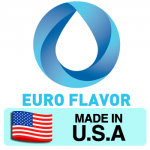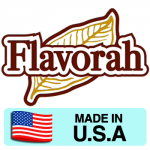Harnessing the Power of Concentrated Flavorings in Aromatherapy

Aromatherapy has long been recognized for its ability to influence mood, reduce stress, and promote overall well-being. While essential oils are traditionally used in this practice, concentrated flavourings offer a unique and potent alternative. These intense essences can be effectively incorporated into various aromatherapy applications.
Understanding Concentrated Flavourings
Concentrated flavourings are highly potent extracts derived from natural or synthetic sources. They're typically much stronger than essential oils, meaning a little goes a long way. When used in aromatherapy, these concentrated essences can deliver powerful aromatic experiences.
Aromatherapy Applications
- DIY Reed Diffusers: Create your own reed diffuser by mixing a few drops of concentrated flavouring with a carrier oil. This method allows for a constant, subtle release of aroma into your space.
- Steam Inhalation: Add 1-2 drops of a concentrated flavouring to a bowl of hot water. Drape a towel over your head and inhale the steam for a quick aromatherapy session. This can be particularly effective with mint or eucalyptus flavours for respiratory comfort.
- Aromatherapy Sprays: Dilute concentrated flavourings in water or witch hazel to create custom room or linen sprays. These can be used to freshen up a space or set a specific mood.
- Scented Candles: Incorporate concentrated flavorings into homemade candles. As the candle burns, it will release the aroma, creating a soothing or invigorating atmosphere.
- Bath and Body Products: Add a drop or two of concentrated flavoring to unscented lotions, bath salts, or liquid soaps for a personalized aromatherapy experience.
Safety Considerations
When using concentrated flavorings for aromatherapy, keep these important points in mind:
- Dilution is crucial. These flavourings are highly concentrated and should always be diluted before use. Every flavour is unique in terms of potentcy so it's always best to use a low dilution and slowly work your way up.
- Research before use, as some flavours may contain irritants. We recommend visiting the manufacturers website where you can the relevant MSDS (Material Safety Data Sheet)
- Patch test before applying to skin to check for any adverse reactions.
- Keep out of reach of children and pets.
- Use in moderation. More isn't always better in aromatherapy.
Choosing Your Flavourings
The type of flavouring you choose depends largely on what you're making. Here are some recommendations:
- Lip Balms: Candy and fruit flavors work exceptionally well here. Think cherry, strawberry, or bubblegum for a fun, sweet touch. These flavours not only smell great but can also make your lip balm more appealing to use.
- Scented Candles: A wide range of flavours can be used effectively in candles. Fruit scents like apple or peach can create a fresh, welcoming atmosphere. Vanilla and cinnamon flavors add warmth and coziness, perfect for creating a comforting ambiance during colder months.
- Room Sprays: Citrus flavours like lemon or orange work well for a refreshing, clean scent. Lavender or chamomile can be used for a calming effect, ideal for bedrooms or relaxation spaces.
- Bath Products: Fruit and candy flavours can provide a fun twist, while floral scents like rose or jasmine can create a luxurious, spa-like atmosphere.
- Soaps: Herbal flavours such as rosemary or thyme can offer a fresh, clean scent. For a more indulgent feel, consider chocolate or coffee flavours.
- Diffuser Blends: Woody scents like oak wood or tobacco can create a grounding effect, while floral notes can lift the mood. Experiment with combinations to create unique blends.
Don't be afraid to experiment and create your own unique combinations. The versatility of concentrated flavourings allows for endless creative possibilities in aromatherapy applications.





















